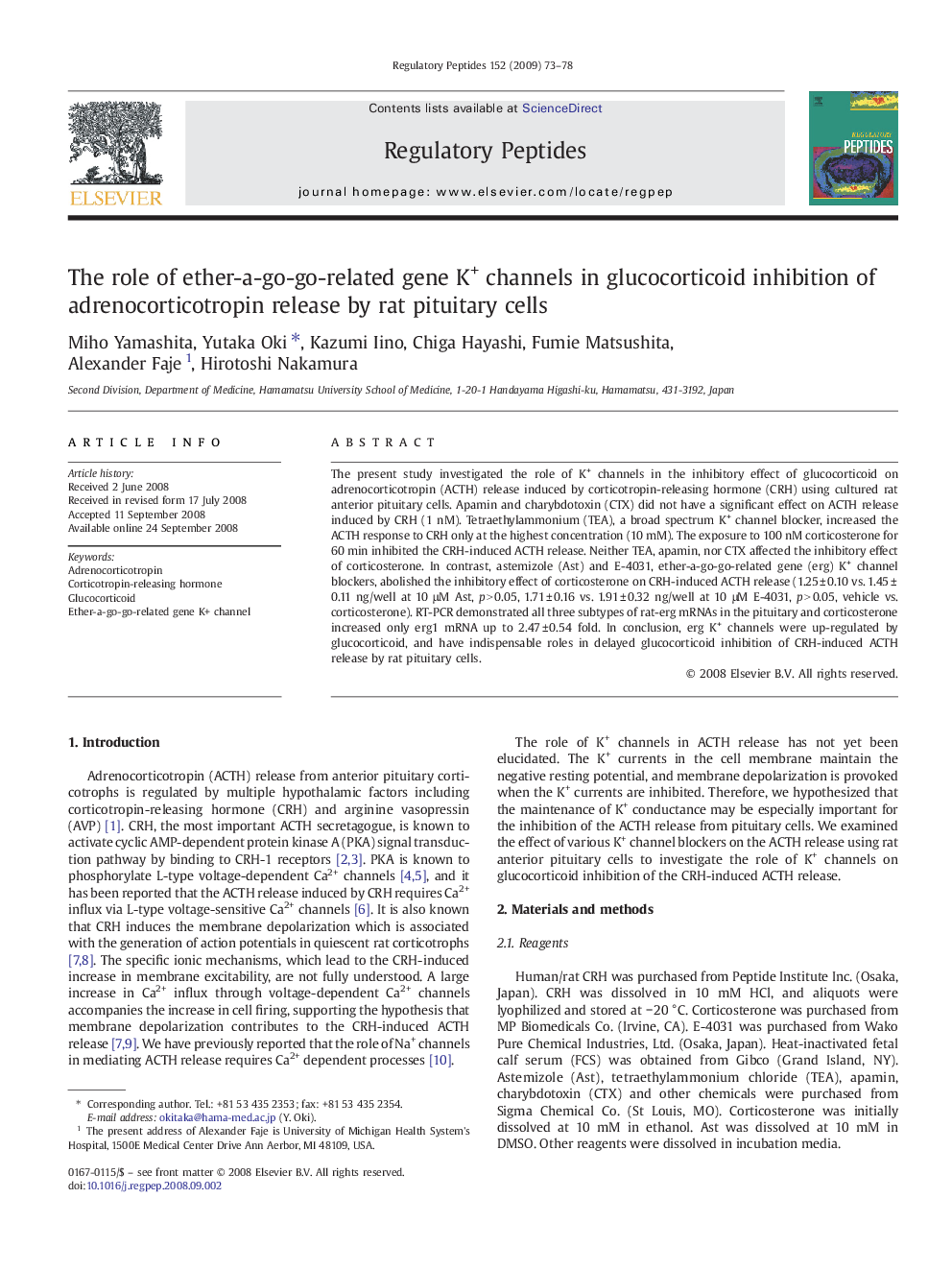| Article ID | Journal | Published Year | Pages | File Type |
|---|---|---|---|---|
| 2023072 | Regulatory Peptides | 2009 | 6 Pages |
Abstract
The present study investigated the role of K+ channels in the inhibitory effect of glucocorticoid on adrenocorticotropin (ACTH) release induced by corticotropin-releasing hormone (CRH) using cultured rat anterior pituitary cells. Apamin and charybdotoxin (CTX) did not have a significant effect on ACTH release induced by CRH (1 nM). Tetraethylammonium (TEA), a broad spectrum K+ channel blocker, increased the ACTH response to CRH only at the highest concentration (10 mM). The exposure to 100 nM corticosterone for 60 min inhibited the CRH-induced ACTH release. Neither TEA, apamin, nor CTX affected the inhibitory effect of corticosterone. In contrast, astemizole (Ast) and E-4031, ether-a-go-go-related gene (erg) K+ channel blockers, abolished the inhibitory effect of corticosterone on CRH-induced ACTH release (1.25 ± 0.10 vs. 1.45 ± 0.11 ng/well at 10 μM Ast, p > 0.05, 1.71 ± 0.16 vs. 1.91 ± 0.32 ng/well at 10 μM E-4031, p > 0.05, vehicle vs. corticosterone). RT-PCR demonstrated all three subtypes of rat-erg mRNAs in the pituitary and corticosterone increased only erg1 mRNA up to 2.47 ± 0.54 fold. In conclusion, erg K+ channels were up-regulated by glucocorticoid, and have indispensable roles in delayed glucocorticoid inhibition of CRH-induced ACTH release by rat pituitary cells.
Related Topics
Life Sciences
Biochemistry, Genetics and Molecular Biology
Biochemistry
Authors
Miho Yamashita, Yutaka Oki, Kazumi Iino, Chiga Hayashi, Fumie Matsushita, Alexander Faje, Hirotoshi Nakamura,
